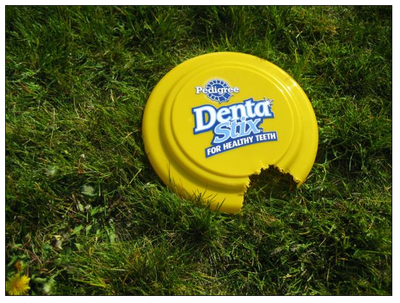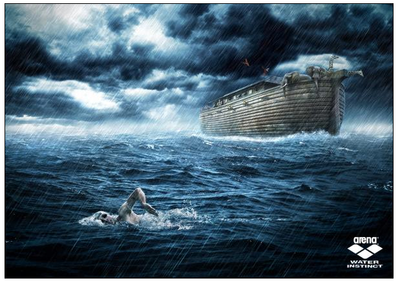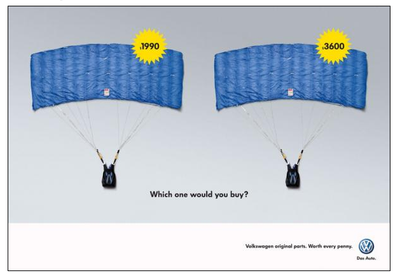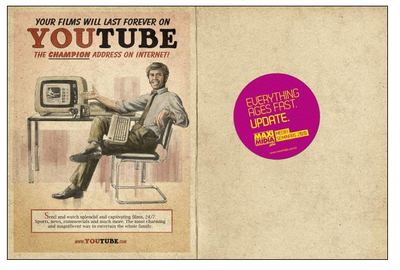scientifically proven system for creating award-winning ads
I'm currently reading 'Made to Stick' by Chip and Dan Heath. The premise of the book is that while some people may be naturally more creative than others the creation of 'sticky' ideas is something that can be learned.
The book describes an experiment conducted by an Israeli research team in 1999. They assembled a group of 200 award winning, highly regarded print ads and, after studying them, decided that 89% could be classified by just six categories. Yes, rather than being fresh and surprising, highly creative advertising follows a limited number of basic templates. (This perhaps isn't all that surprising a contention if there are only 'seven basic plots' that all stories follow.)
The research paper 'The Fundamental Templates of Quality Ads was published in MARKETING SCIENCE Vol. 18, No. 3, Summer 1999 and is available online here.
The researchers claim:
Creative ideation is a highly complex process, which is difficult to formalize and control. Evidently, even in a complex thinking context certain patterns of creativity may emerge. Relying on such observed patterns may help in "organizing" the creative process by promoting routes that have been proven to lead to productive ideas and avoiding those that do not.
The present research suggests that successful advertisements share and are characterized by such abstract patterns termed creativity templates. The theoretical rationale for the emergence of such templates and the empirical studies that detect the key creativity templates underlying quality ads indicate that the templates are identifiable, objectively verifiable, and generalizable across multiple categories.
The six categories, of which the first two made up most examples of award-winning ads, are as follows. (The examples shown are mine.)
1. Extreme consequences
In which the exaggerated consequences of a product attribute are demonstrated.

2. Pictorial analogy
In which extreme analogies are rendered visually.

3. Extreme situations
In which a product is shown performing under unusual, exaggerated circumstances.

4. Competition
In which a product is shown winning in competition with another product, often in an unusual situation.

5. Interactive experiments
Where consumers can interact directly with the product, sometimes via testable credentials.
(I don't really understand this one in the context of print advertising so I couldn't find a good example.)
6. Dimensionality alteration
Where the result of using or not using a product is dramatised by a leap in time that shows the long term consequences.
The researchers tried to use their six templates to classify 200 other ads – from the same publications and for the same types of products – that had not received awards. Amazingly, when the researchers tried to classify these 'less successful' ads, they could classify only two per cent of them. The surprising lesson of this story: highly creative ads are more predictable than uncreative ones.
These research findings seemed odd to me until I trawled the international awards sites for examples to illustrate the categories. A cursory skim of sites like this reveals that most 'award-winning' ads are executionally similar, generic rather than particular to a brand, based on a visual pun, and are probable scams, like the plasticine helicopter above.
Anyway, those Israeli researchers didn't stop there. They then decided to see if these templates could be used as a system to generate successful advertising.
They brought in three groups of consumers and briefed them to create ads for three products. One group was given background briefing information but no training, the second group was trained for two hours by an experienced 'creativity instructor' who taught them how to use brainstorming free-association techniques to generate ideas. The third group was trained for two hours on how to use the six templates. The ads were tested with consumers, who apparently rated the ads by the third group as '50 per cent more creative'. The ads 'produced a 55 per cent more positive attitude to the products advertised'.
So, there you have it. Using these simple templates will make your crowd-sourced ads sure-fire winners. Why have we been making it so complicated for all these years?
Of course, the experiment only tested the templated concepts against ideas created by other research respondents, not against the ideas of talented creatives. Which one could argue is a bit like giving one group a paint-by-numbers grid. They may turn out something that looks better than the pictures done without that grid, but that doesn't mean it will stand comparison to the work of a genuinely talented artist.
Crowd-sourced amateurs working to a template system couldn't come up with truly great work like this, for example:

